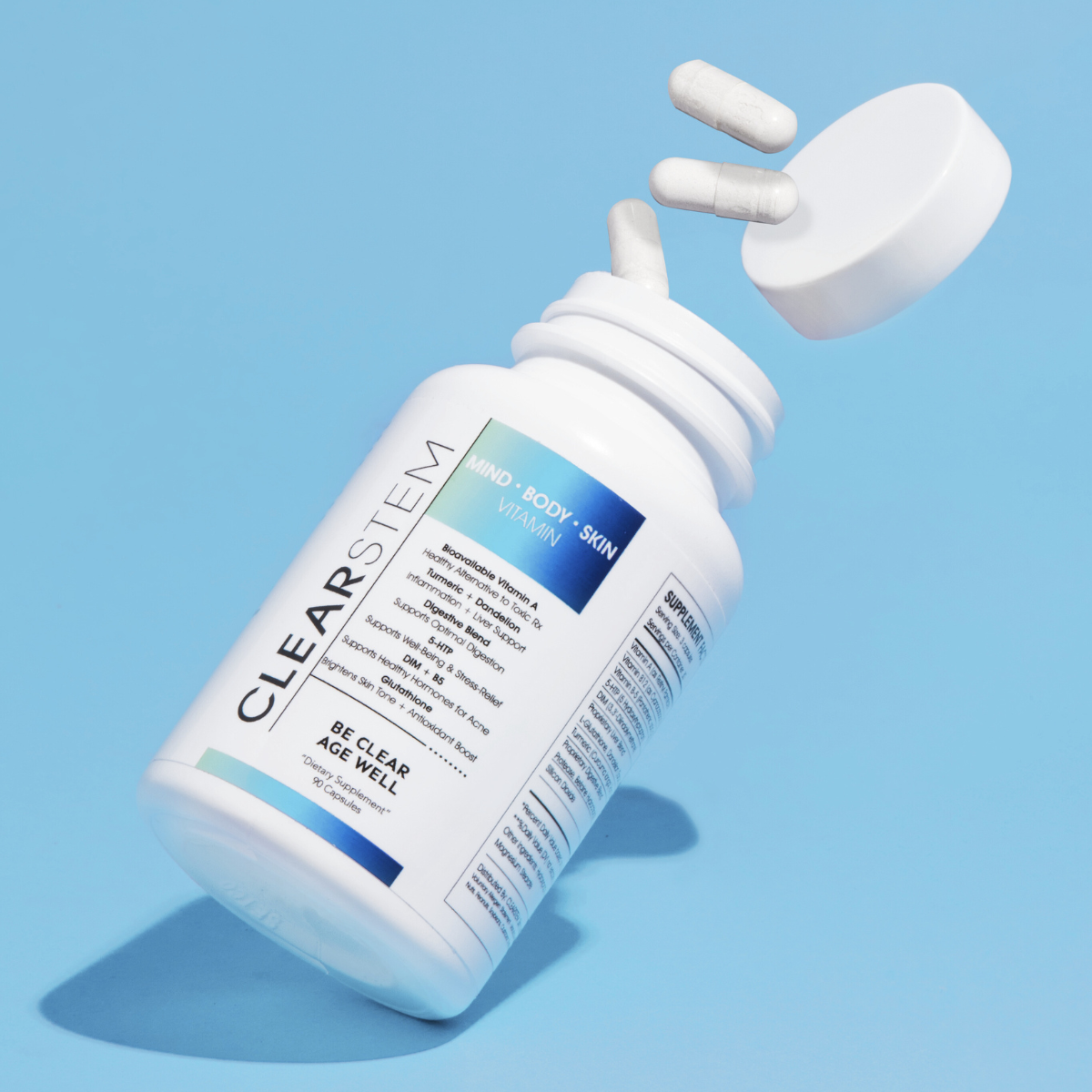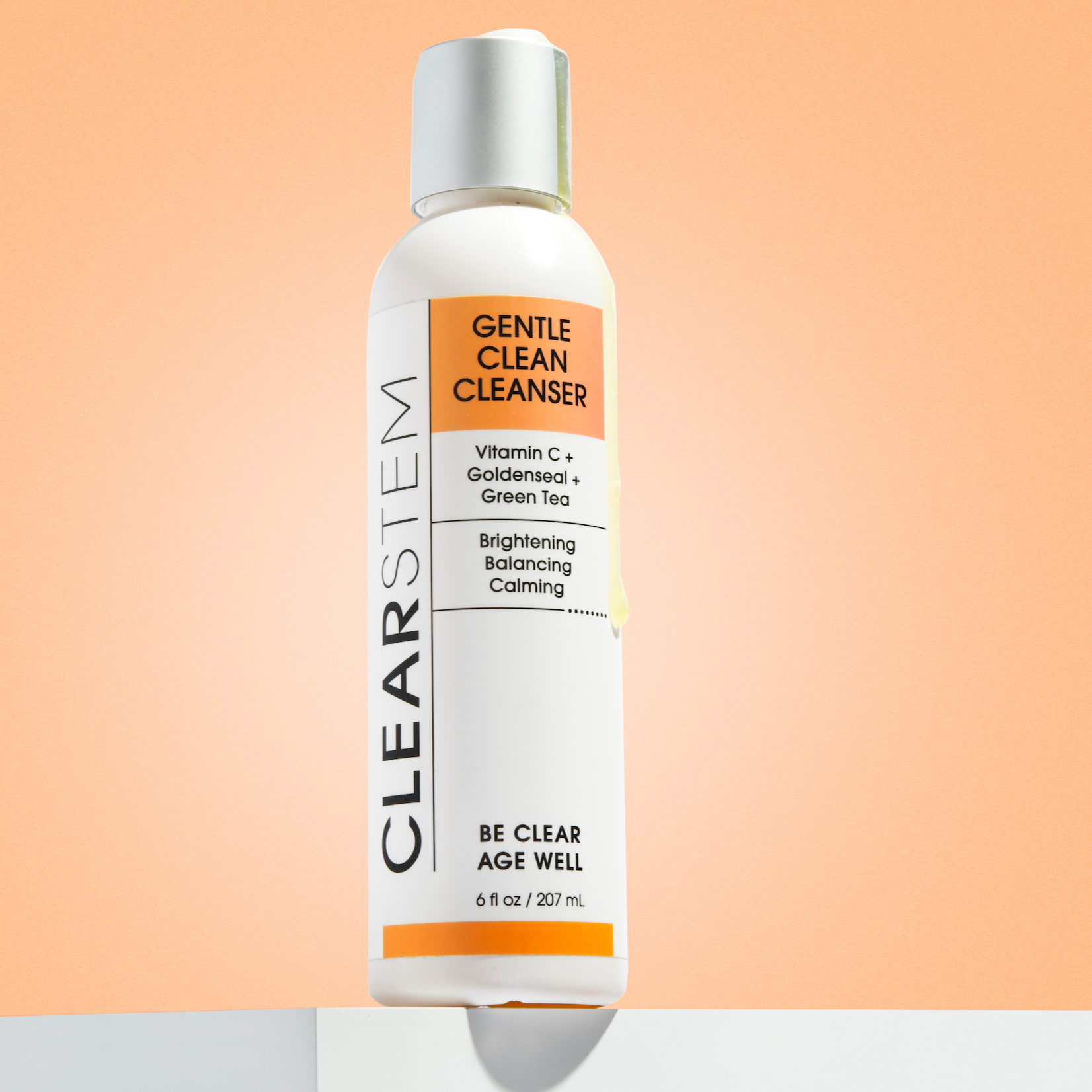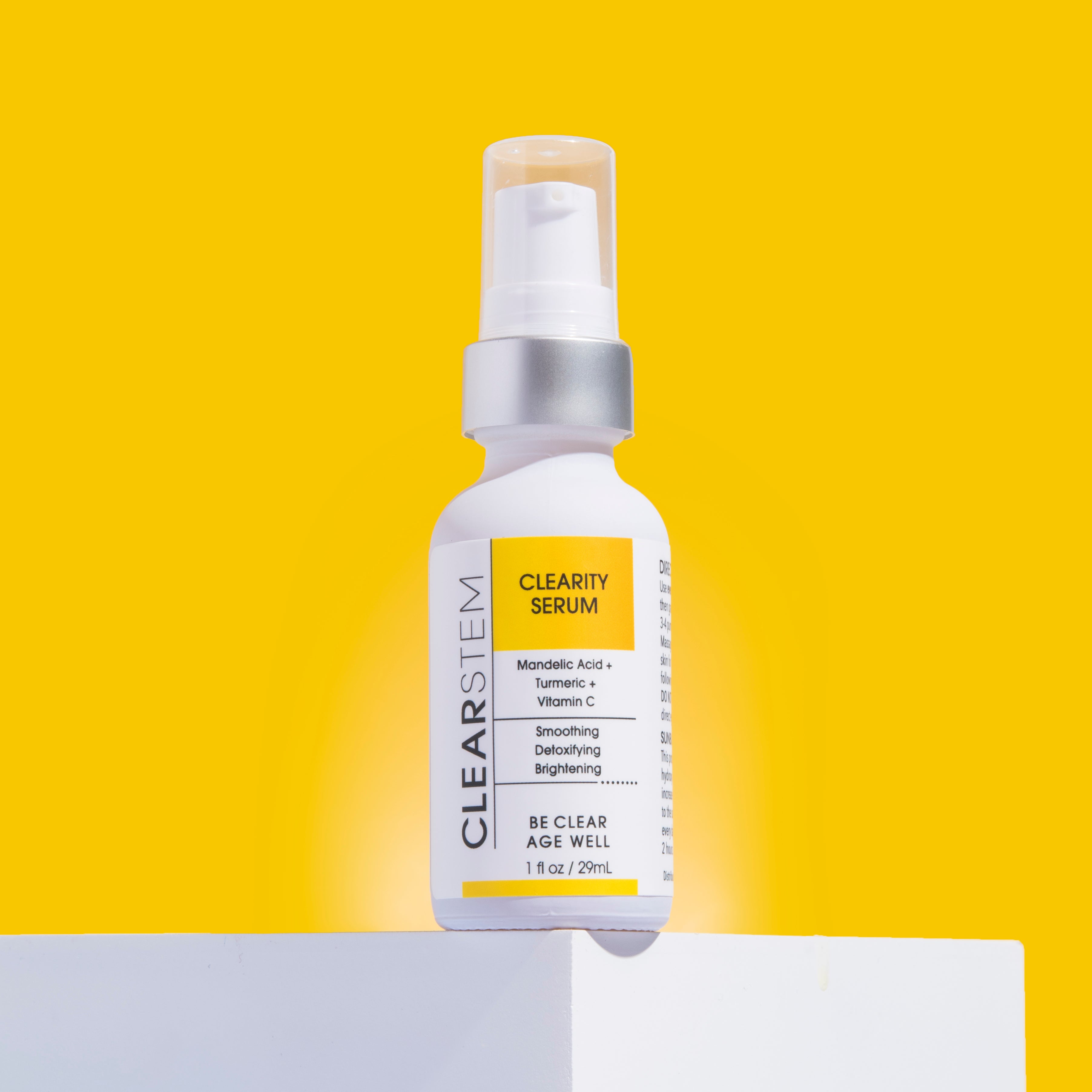So maybe you’re a person who likes those pimple popping shows (and that’s completely okay!), but to many people, the word “pimple” is enough to make their tummy turn. However, pimples are a natural part of life, and everyone can get them, from infancy on into adulthood. (1)
And just as easily as everyone can get them, everyone can treat them, whether they have turned into a full-blown case of acne or not. But if you’re here, you’re likely worried about your acne breakout, and wondering if it’s random blemishes… or is it just a burst of pimples… or is it ongoing acne?
When people are considering acne vs. pimples and trying to figure out what the differences are between them, many are of a mindset that acne and pimples are one and the same, but the words actually describe two different things. If you have concerns about either, we’re here to teach you all about the differences between them, the causes of acne and pimples, and most importantly, how to treat both once and for all.
What are Pimples?
A pimple, by definition, is a pustule, papule, or lesion that forms in a pore anywhere on the body. While pimples are often more common on the face, they can also spread prolifically on the back, chest, and shoulders. This all has to do with your sebaceous glands, or oil glands, that are a part of your skin. (2)
No matter how clean we think we are, our bodies are living organisms that create byproducts, and some of these byproducts are less than pleasant. However, they’re also necessary for us to have the amazing bodies we have, and this complex ecosystem is always on the search for homeostasis.
Take, for instance, those oil glands that we’ve mentioned. Oil glands are great in that they do some necessary things, like helping to keep our skin hydrated, regulating our body temperature and preventing dehydration, protecting our skin from solar damage, and even keeping dangerous microbes from getting into our bodies. But when they get clogged, it’s worse than a garlic milkshake. (3)
The thing is, our bodies are constantly shedding things. Excess oils and dead skin are sloughing off of us at alarming rates every hour, and sometimes, especially when our hormones are going crazy (read: puberty, menstrual cycles, even stress!).
In turn, these oils and clumpy skin cells that are supposed to be cleanly discarded get stuck in your pores. The result? A spot smaller than an ant that can elicit feelings as big as Godzilla.
That said, there are a number of different types of skin issues that are commonly referred to as pimples, such as: (4)
- Whiteheads are pimples that have not breached the surface of your skin. Also known as a closed comedone, whiteheads are small and flesh colored though they may appear lighter.
- Blackheads are those icky looking things that look like bits of dirt, just chilling in your pores. It’s not dirt, so don’t try to scrub it away! Blackheads are also known as open comedones and are dark because of oxidation of sebum.
- Papules are rounded bumps that come up from the skin. They are usually pink, small, and hard. They may feel like tiny pebbles underneath your skin.
- Pustules are pimples that are full of pus. You know exactly when a pustule is popping up because they are the most noticeable, complete with large, yellowish white heads that are full of pus and angry red bases that are full of blood.
- Nodules are like larger, deeper versions of papules. They can be painful and usually take root deep within the skin, making them more difficult to overcome without some patience.
- Cysts can also be very hard, deep, and painful. These are the type of pimples most likely to cause scars. Cysts are on the surface of the skin, and are usually filled with pus.
What is Acne?
Acne, on the other hand, is not just a pimple. While many people refer to pimples and acne synonymously, pimples are actually a symptom of acne, which is considered an inflammatory skin disorder. It’s an incredibly common issue, with over 85% of people suffering from acne during their lives, usually during puberty and adolescence. (5 & 6)
So the simplest difference between acne vs. pimples is that acne is the issue and pimples are a symptom, and there are also a number of different kinds of pimples that can happen during an acne outbreak. While some redness around the pimples and scarring of the skin can occur if pimples aren’t treated properly, having pimples is the most common symptom of an acne outbreak.
What is the Key Difference Between Acne vs. Pimples?
It’s important to remember, in the age-old acne vs. pimples debate, that pimples are a symptom of a disorder and acne is the name of the disorder itself. So while often people use these terms interchangeably, not everyone who gets pimples also happens to have acne.
And the difference between acne and pimples ends there, friends. Anyone can get pimples, and anyone can get acne. This is because both acne and pimples are a universal skin issue in that it affects people of all ages, ethnicities, and tastes in music.
What are the Causes of Acne vs. Pimples?
It can be confusing to try to figure out what causes acne and pimples, but fortunately, any uncertainty can be cleared up easily (no pun intended!) by a little understanding of what causes each. Let’s go ahead and take a closer look at the different triggers of acne and pimples together, friends.
What Causes Acne?
A large group of pimples in a particular area of your body that may be joined by redness, excess skin irritation, and even skin scarring can be called acne. A single pimple can turn into a full-blown case of acne for a variety of reasons, but the most common causes are pore-clogging ingredients in skincare, internal inflammation, or hormonal changes in the body. (7)
Hormones and acne go back further than the tale as old as time, and balancing those hormones can be the secret to finally getting clear skin. If you are a person who strives for calm in your life, then you may be aware that hormonal changes can be caused by tons of things and not just puberty.
Stress, pregnancy (or trying to get pregnant), menstruation, birth control pills, and puberty are the most common causes of hormonal fluctuations. However, there are a number of other things that can cause them as well, such as certain thyroid disorders or inflammatory eating habits (like yo-yo dieting). Treating the root cause of the hormonal imbalance, therefore, is of the utmost importance when trying to treat your breakouts.
What Causes Pimples?
Pimples are what happens when your skin’s plumber gets a little overworked and can’t keep the pipes cleared enough to prevent that bathtub from backing up when you take a shower. Even the best, most experienced plumbers get overworked sometimes and can’t keep the occasional backups from happening. The same goes for our skin. (8)
Our bodies are awesome machines, doing thousands of complex processes all day everyday, and sometimes the detoxification process causes the sebaceous glands in our skin to get overwhelmed. Dead skin cells can become trapped and then bind together with oil secretions to cause a great big breakout.
The clogged pore can leave a pathway for bacteria to get into your skin, as the oil gland can’t clear itself out properly. The contents of this clog determine the type of pimples that will pop up on your skin, including whiteheads, blackheads, and pustules.
How Does Treatment Differ Between Acne and Pimples?
When it comes to treating acne vs. pimples, it really depends on the severity of the outbreak. Most of the treatment for pimples can be done at home, as well as most of the treatment for acne – unless it is extremely severe. The best way to know what is right for you is to do a little research, talk to your dermatologist if you feel your acne is severe or affecting your quality of life, and go from there. Another great resource is a Face Reality certified acne specialist (you can search this on Yelp).
Pimples that are loners just chilling on your face are usually easy to take care of with affordable over-the-counter medications. Treatment may last for a few days, but most pimples that are actually pimples (and not nodules or cysts that may require a deeper treatment) will clear up in short order. If your pimples are spreading or aren’t helped by an over-the-counter zit treatment, then you may have systemic acne.
Acne treatment may be a bit more involved, depending on the severity of the triggers. Many products that don’t require a prescription can still be very helpful for acne, although people with severe cases may need to get special lab work done to test for liver function, hormone pathways, and digestive/ gut health issues.. Before you start slathering everything on your face that claims to help with pimples, though,check for pore-cloggers and ask your doctor or certified acne specialist.
Recommended Skincare for Acne vs. Pimples
If you follow a regular skincare routine (or even if you don’t have much of a routine at all), then the appearance of any pimples on your skin may indicate it’s time to change that. Fortunately, today’s advances have made treatment options for acne much more effective and readily available.
For pimples, a non-comedogenic skin care routine that includes regular exfoliation is key. You may find that some spot treatments and topicals can provide some relief, as can ice-packing. Certain types of products may do more harm than good. (9)
Many over-the-counter brands offer products that are pimple spot treatments, and these can help work wonders for singular pimple events. These products often contain small amounts of salicylic or benzoyl peroxide that treat the bacteria that has taken up residence in your oil gland and caused the aforementioned pimple.
Skincare for acne can become much more involved and hardcore. The most important thing to keep in mind when treating your acne is that nothing is going to work immediately, and the more information you have, the better. Talking to a doctor, dermatologist, or even an acne nutritionist can give you confidence that you are doing what you need to be doing to put a lasso on your acne and get your pimples under control.
Over the counter acne products can also be helpful. The same ingredients found in pimple spot treatments (such as benzoyl peroxide and salicylic acid) can be helpful in acne treatments. You may also encounter azelaic acid and alpha- or beta-hydroxy acids. All of these ingredients work to clear the current clogged pores you have, as well as help prevent further clogged pores from happening in the future. (10)
Alpha- and beta-hydroxy acids (AHAs and BHAs) even work from the inside to exfoliate your skin and slough dead skin cells away from your pores before they can decide to take up residence and start causing damage. These powerful blemish fighters can be found in many topical treatments and medications, and taking a more in-depth look at AHA vs. BHA can explain how these compounds benefit your skin.
And finally, your skincare routine may need to get a makeover and include things like serums and better cleansers on top of adding products with pimple fighting properties. For long-term acne clearing power, using a mandelic acid serum can help give you clearer skin with fewer fine lines and less irritation.
The Takeaway
Though they are referred to as the same things, it’s important to keep in mind that pimples are just a symptom of acne, and both can be resolved with the right treatment and perseverance. No matter what you think (especially if you’re encountering acne for the first time as a teenager!), a bad case of acne isn’t the end of the world, and it can be resolved. Incorporating skincare for acne scars into your routine can also help address lingering scars.
The types of over the counter products available today make both pimples – and even acne breakouts – oh-so-much more treatable than what our parents had to deal with when this happened to them. So don’t fret, friends. You’re already on the right path by learning about the differences between pimples vs acne and taking a proactive approach to getting rid of these breakouts.
The bottom line here? Keep learning, try some new products, and even feel free to talk to professionals about recommendations, because acne literally happens to pretty much everybody. And now that you know how to treat your own breakouts, you’ll be able to not only get rid of any existing breakouts, but you’ll also be able to prevent any new ones cropping up in the future!
Sources
Source 1: Infantile Acne - StatPearls https://www.ncbi.nlm.nih.gov/books/NBK541124/
Source 2: Physiology, Sebaceous Glands https://www.ncbi.nlm.nih.gov/books/NBK499819/
Source 3: Sebaceous gland lipids https://www.ncbi.nlm.nih.gov/pmc/articles/PMC2835893/
Source 4: What is Acne? Definition & Types https://www.niams.nih.gov/health-topics/acne
Source 5: Skin conditions by the numbers https://www.aad.org/media/stats-numbers
Source 6: Acne: Treatment, Types, Causes & Prevention https://my.clevelandclinic.org/health/diseases/12233-acne
Source 7: Role of hormones in acne vulgaris https://pubmed.ncbi.nlm.nih.gov/21763298/
Source 8: Acne - Symptoms and Causes https://www.pennmedicine.org/for-patients-and-visitors/patient-information/conditions-treated-a-to-z/acne
Source 9: Over-the-counter Acne Treatments https://www.ncbi.nlm.nih.gov/pmc/articles/PMC3366450/
Source 10: Azelaic acid in the treatment of acne in adult females: case reports https://pubmed.ncbi.nlm.nih.gov/24280645/









